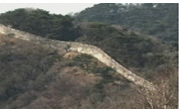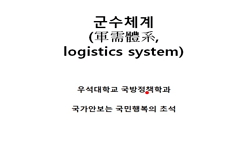진안고원은 지금까지 문화의 점이지대, 고대 교통의 중심지, 백제·신라·대가야의 각축장이라 불리고 있으나 이에 대한 연구는 다소 미진한 실정이다. 진안고원을 크게 고총고분이 밀집 분...
http://chineseinput.net/에서 pinyin(병음)방식으로 중국어를 변환할 수 있습니다.
변환된 중국어를 복사하여 사용하시면 됩니다.
- 中文 을 입력하시려면 zhongwen을 입력하시고 space를누르시면됩니다.
- 北京 을 입력하시려면 beijing을 입력하시고 space를 누르시면 됩니다.
https://www.riss.kr/link?id=A99800695
- 저자
- 발행기관
- 학술지명
- 권호사항
-
발행연도
2013
-
작성언어
Korean
-
주제어
진안고원의 가야 ; 장수권 ; 고총고문 ; 분포양상 ; 규모 ; 평면형태 ; 대가야토기 ; 재지계토기 ; 산성 ; 봉수 ; Gaya in Jinan plateau ; Jangsu area ; ancient tomb ; distribution pattern ; size ; planar shape ; Daegaya pottery ; local pottery ; fortress ; signal-fire
-
KDC
911.0025
-
등재정보
KCI등재후보
-
자료형태
학술저널
-
수록면
36-67(32쪽)
- 제공처
-
0
상세조회 -
0
다운로드
부가정보
국문 초록 (Abstract)
진안고원은 지금까지 문화의 점이지대, 고대 교통의 중심지, 백제·신라·대가야의 각축장이라 불리고 있으나 이에 대한 연구는 다소 미진한 실정이다. 진안고원을 크게 고총고분이 밀집 분포하는 장계분지와 장수분지가 위치하는 장수권과 금산·무주·진안권으로 구분하고, 고총고분의 주묘제인 수혈식석곽묘의 구조와 출토유물에 대한 전반적인 양상을 검토하고자 하였다. 특히, 장수권에 밀집분포하고 있는 고총고분을 중심으로, 4~7세기대의 문화양상을 살펴보고자 하였다. 장수권에서 새롭게 드러난 고총고분의 분포와 현황을 파악하여 장계분지 120여 기, 장수분지 80여 기, 총 200여 기 이상의 가야계 중대형 고총이 밀집분포하고 있음을 확인하였고, 이들 고총의 규모나 배치·밀집도의 검토를 통해 삼봉리고분군과 월강리고분군을 중심고분군으로 파악하였다. 특히, 장계분지에 자리한 120여 기 이상의 고총들은 금강 상류지역에서 최대 밀집도와 규모를 보이며, 이러한 고총들은 진안고원 가야의 지배자 집단이 조영한 고분으로 이해하였다. 고총의 입지는 분지 내에 펼쳐진 구릉과 들판이 내려다보이며, 분지를 감싸고 있는 산지에서 뻗어내린 지류에 자리하고 있어, 백두대간의 동쪽에서 조사된 가야계 고총의 입지와 관련성을 보이고 있다. 봉토의 평면형태는 동서로 긴 장타원형으로 그 가장자리에 호석을 두른 흔적은 확인되지 않는다. 가야계 고총 중 봉토 가장자리에 호석시설을 갖추지 않은 것은 하나의 분포권을 이룬다. 남원 월산리·두락리를 중심으로 함양, 산청, 장수지역이 여기에 속한다고 할 수 있다. 진안고원에는 5세기 전반에 가야토기가 등장하여 5세기 중엽 이후에는 대가야 양식 토기가 많은 양을 차지한다. 5세기 중반 이후 대가야토기의 확산이 이루어지지만 재지의 묘제 또는 재지토기양식과 공존하는 것으로 보아 대가야 중심집단으로부터 독립적인 자치권이 보장된 지역집단으로서 대가야와 연맹관계를 유지하고 있는 것으로 보여진다. 진안고원의 가야는 백두대간과 금남호남정맥 산줄기에 산성과 봉수를 축조·운영하였고, 200여 기 이상의 가야계 중대형 고총을 조영하였으며, 5세기 전반에 등장하여 6세기 전반까지 가야계 소국으로 존속했을 가능성이 높다고 판단된다.
다국어 초록 (Multilingual Abstract)
Jinan plateau has been called transitional zone of culture, center of ancient traffic, and arena of competition for Baekje, Silla, and Daegaya, but there has not been much research on it. Jinan plateau was largely divided into the Jangsu area with Jan...
Jinan plateau has been called transitional zone of culture, center of ancient traffic, and arena of competition for Baekje, Silla, and Daegaya, but there has not been much research on it. Jinan plateau was largely divided into the Jangsu area with Janggye basin and Jangsu basin where ancient tombs are concentrated and the Geumsan/Muju/Jinan area, and the structure of Stone-Lined tombs, the main tomb style of ancient tombs and the overall trend of excavated articles were to be reviewed. Especially, centering on ancient tombs concentrated in Jangsu area, the cultural trend of 4th~7th century was examined. The distribution and current status of ancient tombs newly found in Jangsu area were examined and it was confirmed that 120 tombs in Janggye basin and 80 tombs in Jangsu basin to the total of 200+ of Gaya-style mid/large-sized ancient tombs were confirmed to be concentrated in distribution, and through reviewing arrangement/density of these ancient tombs, Sambong-ri ancient tomb site and Wolgang-ri ancient tomb site were taken as the central ancient tomb sites. Especially, 120 or so ancient tombs located in Janggye basin showed greatest density and size at the upper region of Geum River, and such ancient tombs were understood as those built by the ruler class of Gaya in Jinan basin. The location of ancient tombs had a view of the hills and fields within the basin and was in the tributary coming down from the mountain area surrounding the basin, exhibiting relationship to the location of Gaya-style ancient tombs found on the east site of Baekdudaegan. The planar shape was a long ellipse to west and east, and there was no trace of stone tigers around the boundary. There is an area of distribution for Gaya-style ancient tombs without tiger stone facilities around the tomb, to which Hamyang, Sancheong, and Jangsu area belongs centering on Namwon Wolsan-ri and Durak-ri. Gaya potterys began to emerge around 5th century in Jinan plateau, and after mid-5th century, Daegaya-style potterys account for a large amount. After mid-5th century, Daegaya potterys began to spread, but as it is observed that it coexisted with the local memorial service or local pottery style, it appears that they maintained an alliance relationship to Daegaya as a local group with right of autonomy from the central group of Daegaya. It is thought to be highly possible that Gaya of Jinan plateau built and operated fortresses and signal-fire on the mountain range of Baekdudagan and Geumnam-Honam vein, built 200+ Gaya-style mid/large-sized ancient tombs, and existed as a small Gaya country from 5th century to early 6th century.
동일학술지(권/호) 다른 논문
-
신석기시대 중서부지역 활석혼입토기에 관한 일 고찰 -시공간적 전개과정에 대한 분석을 중심으로-
- 호남고고학회
- 조대연 ( Dae Youn Cho )
- 2013
- KCI등재후보
-
- 호남고고학회
- 고금님 ( Keum Nim Koh )
- 2013
- KCI등재후보
-
高敞(고창) 龍溪里窯(용계리요) 성격에 대한 새로운 시각
- 호남고고학회
- 권혁주 ( Hyeok Joo Kwon )
- 2013
- KCI등재후보
-
- 호남고고학회
- 장우붕자 ( Tomoko Nagatomo )
- 2013
- KCI등재후보






 KISS
KISS





